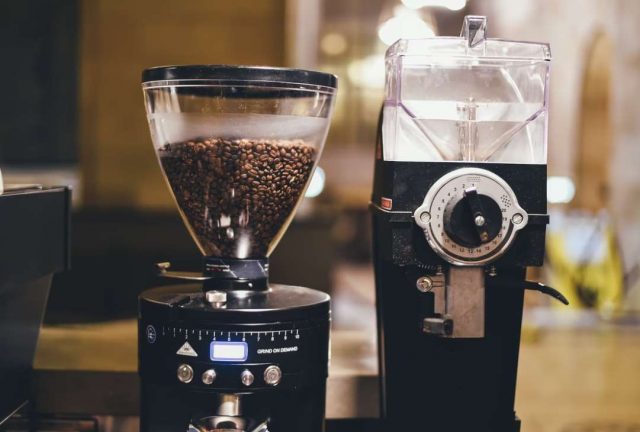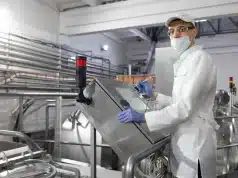The Coffee Grinder is the true star of making coffee. Grinding your coffee enhances its aroma, flavor, and strength, the same way grinding spices enhances it. It breaks strong coffee beans down into smaller pieces that can then be used to brew that perfect cup of coffee you get out of bed for.
Not only that, but fresh coffee is a world of flavors waiting to be discovered; from fruits to spices, you would be surprised by what you taste in a freshly ground cup of coffee. Also, the importance of coffee grinding is clear by the prices of coffee grinders, and that’s why, today, The importance of coffee grinding is clear by the prices of coffee grinders, and that’s why, today, I’m going to be giving you tips on how to use and set up your best coffee grinder for the finest coffee ever.
Main parts of a grinder are: Hopper lid, Whole Bean Hopper (Where the coffee beans are stored), Grind setting indicator and adjusting scale, Pulse button, Timer, and the ground coffee bin. On the inside you find: A center cone burr, a silicone seal, an adjustable ring burr, and burr alignment and lifting tabs.
#1 Learn to recognize Shot Quality and Extraction Rate
The most important part of checking whether you have set up your coffee grinder correctly or not, is to learn to recognize how it should taste when correct. Grind texture is the most crucial factor determining a coffee’s shot quality so how fine or coarse is it. While extraction rate is a term used for the percentage of a coffee ground the gets dissolved in water. In North America, coffee usually has an extraction rate of 18%-22%, while the perfect cup of espresso is considered to have an extraction rate of 19%-20%.
Extraction rate is calculated by multiplying how many grams of brewed coffee you have in your cup with Total Dissolved Solids (the strength of your coffee in %), divided by the amount of dry coffee you used in grams. If you find this calculation too complicated, then trust your intuition in judging how much of your coffee is left after you’ve drank your cup. If it’s around a third of your cup then there’s something wrong. To optimize your extraction rate, you will have to either reduce the amount of dry coffee you used, or to ground coarser with less water.
#2 Use the right Grind setting
It could or could not be the first, second, or last setting you try but make sure that you use the right setting for your brewing method. That being said, here are the general settings for some brew methods:
- Cold-brew: Extra Coarse
- French press: Coarse
- Automatic Coffee Makers: Medium-Coarse
- Manual Pour-overs: Medium
- Espresso: Fine
- Turkish Coffee: Extra Fine
If you haven’t used your grinder before, it’ll take you a few times to get to the perfect setting. Make sure you check how the settings are to be set for your particular grinding, and usually just a few millimeters are enough to go from one setting to the next.
#3 Less is More
A study published in early 2020 proves that the best way to make the best cup of espresso is to grind fewer coffee beans, and grind them coarser. This is cheaper, prevents clogging of the coffee bed, faster, tastes better, and gives more consistent results.
It is commonly thought that the more finely your coffee is ground, the better it tastes and is. However, by the researcher’s rigorous experimentation of coffee extraction models using electrochemistry, this is the conclusion they had reached. This is estimated to reduce waste in commercial coffee grinders, being more efficient, and simultaneously accommodating climate change in areas where coffee is produced.
#4 Deep Clean your Coffee Grinder
Since grinding coffee produces oil, there’s usually a thin layer of oil left in the grinder, invisible to the eyes, and that isn’t removable by wiping it by a cloth. This leftover oil can make your next grind taste a little off so we’re going to be covering the two main ways used to clean coffee grinders.
There has been a trend of grinding rice to clean a grinder; the rice gets ground, pushing out dust and soaks up the oil. Empty the grinder, and your grinder is ready to use. It still needs a traditional cleaning so this is used as a quick solution. However, try not to rely on this too often since rice pellets are much rougher than coffee beans, and that could cause damage to your grinder’s motor.
The traditional way to clean your grinder is to take it apart, and you can put the detachable upper parts in a dishwasher. For the blades, use a soft small brush that can reach into every crevice, and brush any residue out. Then use a damp cloth to wipe the inside of the grinder and blades. Take care to not let any water near the base, so just wipe it carefully.
#5 Clean your Coffee Grinder Often
It has been recommended that every:
- Day, brush excess coffee off your grinder.
- Week, wipe out the grind chamber and hopper of your grinder.
- 3-6 Months, Deep clean your coffee grinder.
However, it all depends on how often you use your coffee grinders, and how many coffee beans are you grinding. If you’re using your coffee grinder regularly, like how it’s used in commercial espresso machines, then you may have to deep clean it more often. Likewise, if you use your coffee once every two weeks, you’ll have to deep clean it less often.
Conclusion
Coffee grinders come in different sizes, manual and automatic, and are just as varied as coffee beans themselves. Therefore, with a little bit of trial and error, you will find what suits you and your needs best, and I urge you to not give up on that. There’s little more satisfying than having a refreshing cup of coffee in the morning.





